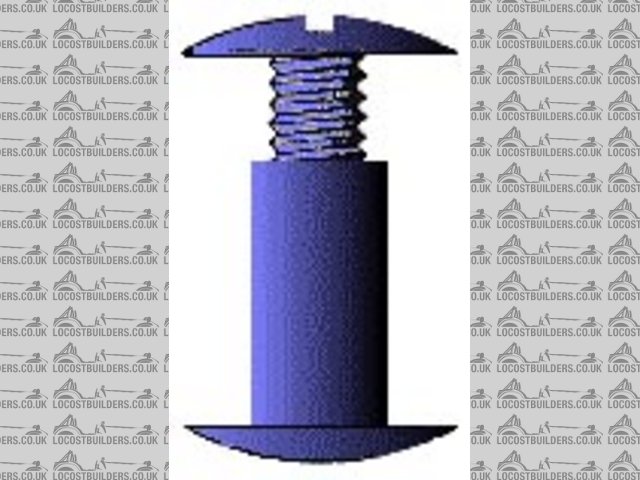David Jenkins
|
| posted on 1/3/04 at 06:47 PM |

|
|
Dzus fastener question
I'm in the process of fixing my nose cone, and the way things have worked out means that I have to do something different with my Dzus
fasteners.
Most people put the screw (outer) part on the GRP and the spring (inner) part on the chassis. Just to be awkward, I need to do it the other way round
for the underneath of the nose cone.
This would be fine, apart from fastening the outer part - if I use pop rivets their 'pulled-up' back parts will scratch the GRP to bits
each time I fit or remove the nose, so I need something that's reasonably flush on both sides. I will be using some foam strip between the two
parts so I can get away with a bit of a bump, but not too much.
My only thought so far is to countersink the inside of the steel as much as I can get away with and use a solid iron rivet hammered into it. Trouble
is, the steel's only around 1.2mm thick, so there's not much scope for a good contersink. I suppose I could try to hammer a flat
head...
Any better ideas, anyone?
David
[Edited on 8/3/04 by David Jenkins]
|
|
|
|
|
andkilde
|
| posted on 1/3/04 at 07:07 PM |

|
|
Hmmn, how about Chicago Screws? Don't know if that a brand name or the generic. They're used to hold visors to hockey helmets and the
like.
Available from the corner hardware "bin" section here in Canada in various lengths.
Each outer face looks like a very shallow slotted screwhead, one has machine screw thread the other had an internally threaded pin (looks a bit like a
tiny tophat bush threaded on the inside).
Err, ignore the explanation, found a picture. A dab of Loctite Red would keep it in place permanently.
Cheers, Ted
 
Rescued attachment CS.jpg
|
|
|
Mix
|
| posted on 2/3/04 at 08:25 AM |

|
|
Aluminium countersunk solid rivets, much easier to set than steel and you will be able to achieve a flat finish. If you have an air chisel, fitting
can be a one man job, if not an assistant makes the task easier. If you let me know the size of the attachment holes and the total thickness you wish
to join I'll pop a few in the post to you. U2U me if you want to give it a try and I'll run you through the fitting process.
Mick
|
|
|
David Jenkins
|
| posted on 2/3/04 at 08:55 AM |

|
|
Ted,
I like your solution, but I'm only talking about a total thickness of around 2mm, so could be a bit clumsy. I will store it away just in
case!
Mick,
Sounds like a good idea - I'll have a look at the problem and let you know. I have an air hammer, but never tried it for setting rivets -
I'm not sure I have a suitable tool to fit it...
rgds,
David
|
|
|
David Jenkins
|
| posted on 7/3/04 at 06:52 PM |

|
|
Next question!
I've successfully fixed the screw part to the steel - in the end I used ordinary pop rivets, banged the steel core out with a punch, and
hammered the remainder flat. Looks to be just fine.
Now I have to fasten the spring bit to the GRP nose cone. Can I pop rivet straight to the grp, or should I make a backing plate? I don't have
much leeway for increasing the thickness.
cheers,
David
|
|
|
Hellfire
|
| posted on 8/3/04 at 01:22 AM |

|
|
Where possible - pop rivetting to GRP is always best if used with a backing plate IMHO. We have used the large head from a rivet, drilled the core to
4 or 5mm then used this just to stop the buttoning effect.

|
|
|
Mix
|
| posted on 8/3/04 at 08:52 AM |

|
|
Rivet 'burrs' are what you want. Basically they are thin 'penny' washers with holes to match the size of rivet you're
using. They act as load spreaders.
If you can't find suitable washers let me know.
Mick
|
|
|













